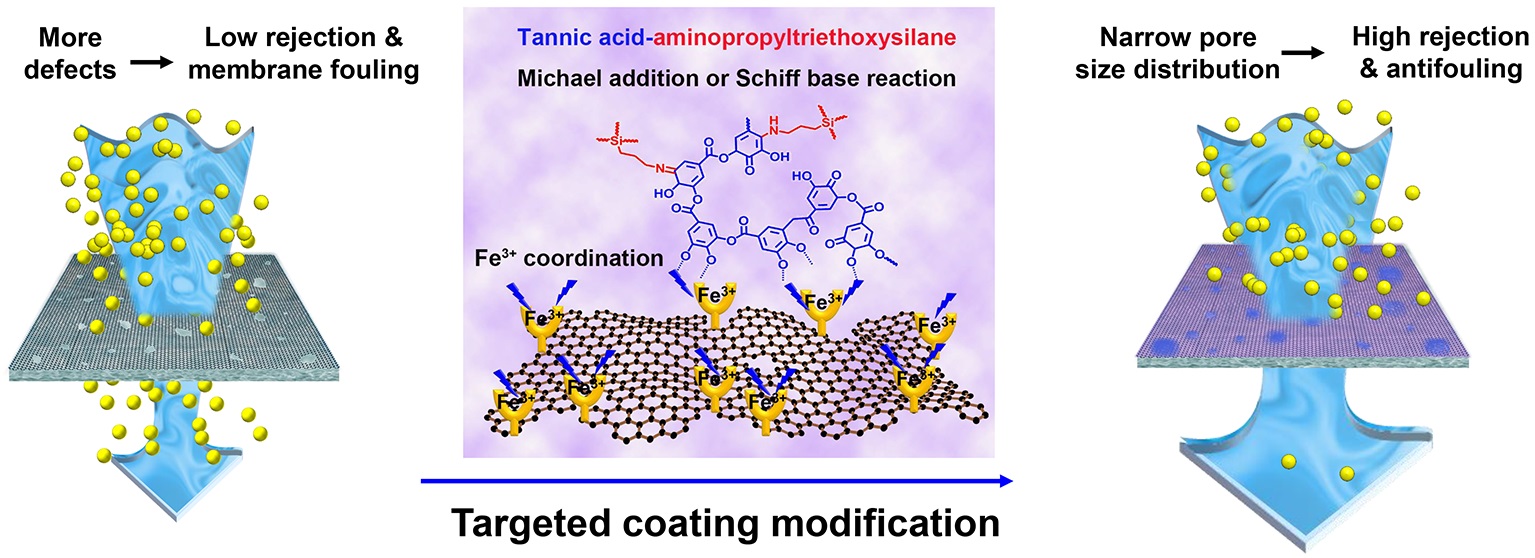Nanofiltration (NF) is an advanced technology for treating wastewater containing organic micropollutants (OMPs).
Recently, a research group led by Prof. WAN Yinhua from the Institute of Process Engineering (IPE) of the Chinese Academy of Sciences developed a stable graphene oxide nanofiltration membrane with uniform pore size to remove OMPs.
The study was published in Chemical Engineering Journal on Jan. 20. (https://doi.org/10.1016/j.cej.2021.128587)
It proposes combining signal amplification strategy and defect chemistry to reduce membrane pore size distribution, thus offering a promising method for preparing highly selective NF membranes.
Graphene oxide (GO) shows great potential in molecular sieving for use in NF. GO membranes are generally prepared by stacking GO nanosheets on a porous support layer. However, the use of GO membranes is limited due to their low stability in aqueous environments.
In addition, large defects resulting from non-uniform deposition of GO nanosheets can cause membranes to have low retention capacity and can also cause serious membrane fouling.
In their study, the researchers proposed a targeted modification strategy to simultaneously enhance the antifouling capacity of GO membranes and regulate their nanochannels.
Ferric ions (Fe3+) are first added to the GO solution to prepare a stable GO membrane (GO-Fe). “The added Fe3+ can amplify the signal of the defects on the GO-Fe membrane where larger transverse defects form due to the repulsive interaction between the adjacent GO nanosheets,” said Prof. LUO Jianquan from IPE.
The GO-Fe membrane surface is subsequently modified by a targeted coating layer consisting of tannic acid-aminopropyltriethoxysilane (TA-APTES), and the larger membrane defects with more Fe3+ are then patched by the thicker TA-APTES coating. Such a “speckled” TA-APTES coating can simultaneously improve the antifouling capacity and narrow the pore size distribution of the Fe3+-mediated GO membrane.

Diagram of targeted coating modification on GO membrane (Image by LI Sushuang)
"Compared to the commercially available polyamide NF membranes, our GO membrane with targeted coating shows higher and more stable rejections on various OMPs, even in long-term operation, cross-flow filtration or under high pressure,” said Prof. LUO.
Media Contact:
LI Xiangyu
Public Information Officer
Institute of Process Engineering, Chinese Academy of Sciences, Beijing 100190, P. R. China.
E-mail: xiangyuli@ipe.ac.cn
Tel: 86-10-82544826